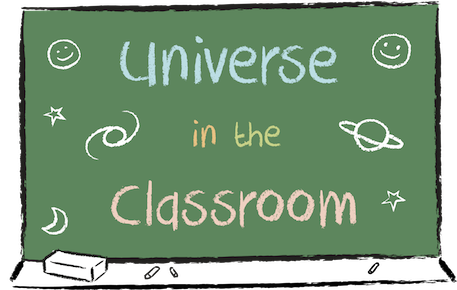Due to the vast distances between the stars, travelling across the cosmos to study astronomical objects up close isn’t possible. Our only vehicle for exploring the Universe is a telescope. The LCOGT robotic telescope network is available 24/7 to carry out observations of the wonders of the Universe, it’s simple to use and can be accessed directly from your classroom simply by visiting www.lcogt.net/observe/!
In this activity, learn about the most common types of telescope and how they collect light from the distant Universe, before building your own model of an LCOGT 40-cm telescope to learn more about how this technology collects light from the distant Universe.
Cut-out Model of a 40-cm Telescope
Full Instructions
Learning Objectives
- Learn about the most common types of telescope: Reflector and Refractor.
- Understand what an LCOGT 40-cm telescope looks like and gain a better understanding of how a reflector telescope works.
- Explore the type of telescope you will use to observe the Universe.
Materials
- Printed Cut-out Model of a 40-cm Telescope per student
- Scissors
- Glue
Background Science
Due to the vast distances between the stars, travelling across the cosmos to study astronomical objects up close isn’t possible. Our only vehicle for exploring the Universe is a telescope. The LCOGT robotic telescope network is available 24/7 to carry out observations of the wonders of the Universe, it’s simple to use and can be accessed directly from your classroom! In this activity your class will follow the simple steps to create a model telescope to take home, then carry out observations of outer space and create some unforgettable images!
Telescopes
There are many different types of telescope, but the main two are ‘refractors’ and ‘reflectors’*. Refractor telescopes work using a lens that bends light to create a magnified image (‘refract’ basically means ‘bend**’). Reflector telescopes use a curved mirror that reflects (bounces) light to create an image.
All LCOGT telescopes are a type of reflector telescope. The each have a large, main mirror a range of sizes (40-cm, 1-metre and 2-metre). The size of their main mirror decides the telescope class. The 40-cm telescope build in this activity has a main mirror of 40-cm diameter.
Like the Sun, other astronomical objects produce light which travels in a straight line across space at a speed of 300,000 kilometres per second. Eventually, the light reaches Earth and travels through the lens of the telescope.
The light hits the large, main mirror at the back of the telescope, which is slightly curved (like a spoon). Due to the curvature, the light reflects at an angle, and is aimed at a second, much smaller, mirror. The light is then reflected off the second mirror to the “eyepiece” which captures the image and sends it to a central computer.
Step-by-Step
1) Print copies of Model of a 40-cm Telescope (Appendix 7) equal to the number of students on thin card and hand each student a copy.
2) Introduce the topic by asking the students how we explore the Universe. We have sent rockets to space, such as New Horizons to Pluto and Apollo to the Moon, but to study the Universe beyond our Solar System, as the distances are so much further, we need to use telescopes.
3) Find out what the students know about telescopes: do they know what telescopes are used for and how they work? Telescopes take images of objects in the night sky by collecting light from the sky.
4) Explain that there are two main types of telescope: refractor and reflector. Refractor telescopes bend and magnify the light using a lens and reflector telescopes use a curved mirror to collect as much light as possible to create an image. Tell students they are going to build their own model of a real reflector telescope before they control one to take images if outer space!
5) Hand each student a Cut-out Model of a 40-cm Telescope
6) Ask them to follow the instructions on the sheet to build their own model telescope.
Conclusion
Now that you understand what a telescope looks like, use a real robotic telescope to create some breath-taking images of the wonders of the cosmos!
